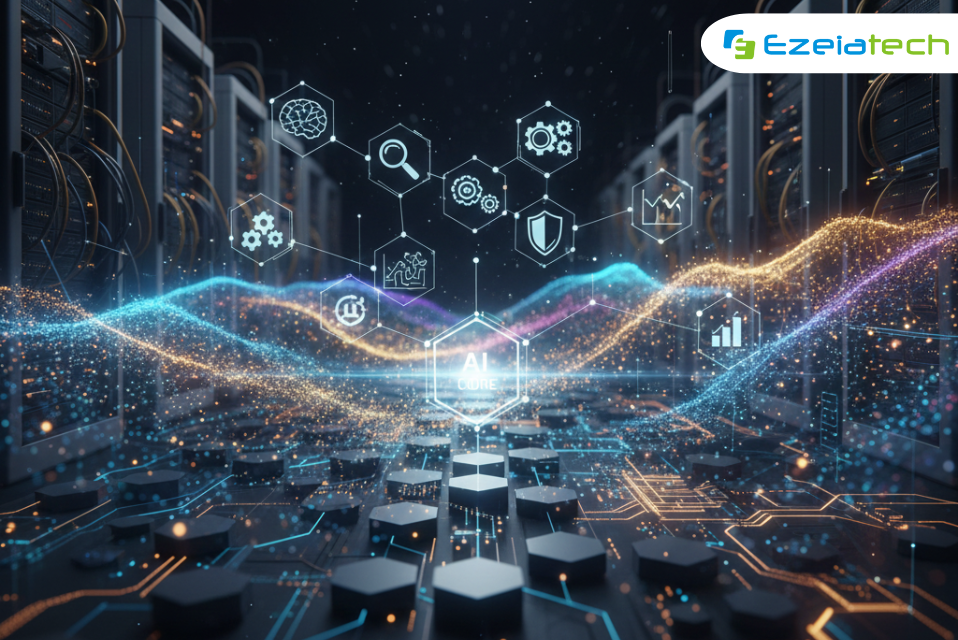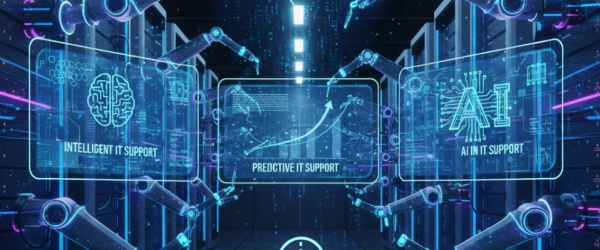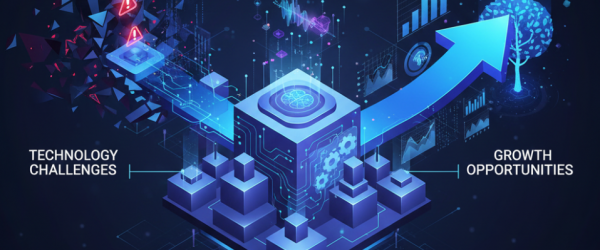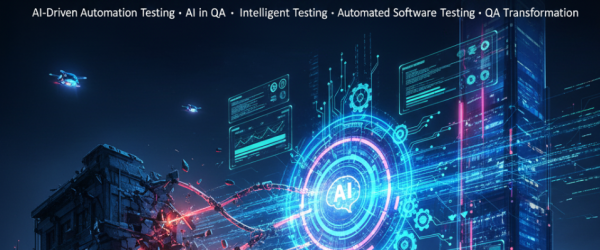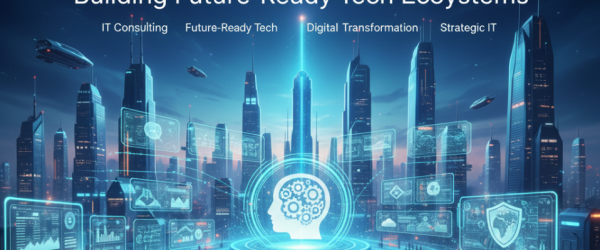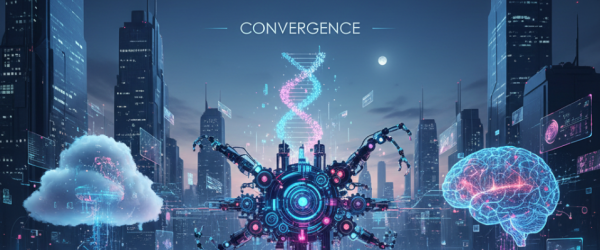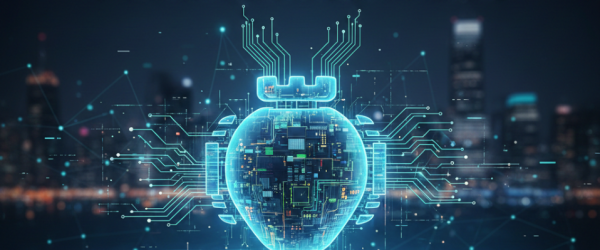Introduction
In an era of digital acceleration, organizations can no longer afford static, reactive IT systems. The shift is underway: AI is being woven into the very fabric of IT infrastructure, turning traditional systems into self-learning, proactive platforms. This is not hype – this is transformation.
Why AI-Driven IT Matters
- The AIOps platform market was estimated around USD 14.60 billion in 2024 and is projected to grow to USD 36.07 billion by 2030, at a CAGR of about 15.2 %.
- Predictive maintenance, one of the core applications, can cut unplanned downtime by 35–50 % and lower maintenance costs by 18–25 %.
- In comparative studies, organizations using predictive or preventive strategies report 52.7 % less unplanned downtime and 78.5 % fewer defects versus reactive maintenance.
These numbers make it clear: embedding AI into IT is not just a nice experiment – it’s a strategic imperative.
What Does “AI-Driven IT” Look Like?
Here’s the difference between traditional IT and AI-driven IT:
| Traditional IT | AI-Driven IT |
| Manual alert triage, high noise | Anomaly detection with filtering, fewer false positives |
| Reactive incident response | Proactive self-healing and remediation |
| Capacity planning by heuristics | Forecasting and dynamic scaling via AI models |
| Separate tools for logs, metrics, tracing | Unified telemetry + feature engineering for intelligence |
| Static thresholds & rules | Models that adapt and evolve via feedback loops |
Key Use Cases in Practice
- Autonomous Incident Response
Anomalies are detected automatically, correlated across multiple layers, and resolved (e.g. restarting services or scaling resources) without human intervention. - Predictive Capacity Planning
AI models forecast workload spikes and automatically allocate resources in advance — preventing performance degradation. - Self-Healing Infrastructure
Faulty nodes are replaced, degraded services recovered, or reconfigurations executed based on known patterns — all seamlessly. - Change Risk Prediction
Before deploying updates, AI simulates risk (probability of failure) and recommends rollback strategies or staging. - Smart IT Support
NLP + AI in helpdesk systems triage tickets, recommend fixes, and escalate with context — improving user satisfaction and reducing resolution time.
Blueprint: Building Smarter Infrastructure
Step-by-Step Implementation Roadmap
Phase 1 — Instrumentation & Baseline
Close gaps in observability. Catalog top incident types and pain points.
Phase 2 — Pilot Intelligence
Launch anomaly detection and correlation on a subset of services. Validate alert accuracy.
Phase 3 — Partial Automation
Automate low-risk remediations (e.g., service restarts). Add a human-in-the-loop for higher-risk ones.
Phase 4 — Scaling & Prediction
Expand to more services, integrate forecasting, and autoscaling.
Phase 5 — Continuous Learning & Governance
Retrain models, monitor drift, audit actions, and enforce compliance.
Best Practices & Governance
- Start small; prove value early.
- Always maintain manual rollback and approval paths.
- Keep decision logic transparent and auditable.
- Use constrained permission models (least privilege).
- Invest in cross-functional collaboration (IT, DevOps, SRE, Security).
- Monitor model drift and performance metrics.
Risks & Mitigations
- False positives / alert fatigue → Use confidence thresholds and continuous retraining.
- Over-automation → Begin with reversible tasks; gradually expand.
- Legacy/data silos → Build adapters and unify context.
- Skill gaps → Train existing teams or partner with AI/ML experts.
- Compliance/audit concerns → Log all decisions, provide human overrides, and ensure explainability.
Conclusion
The evolution to AI-driven IT is not optional — it’s the next stage of digital maturity. Traditional systems will increasingly lag behind those that learn, adapt, and operate proactively. By embedding intelligence into infrastructure, organizations can enhance reliability, reduce cost, and free experts to innovate — not just maintain.

